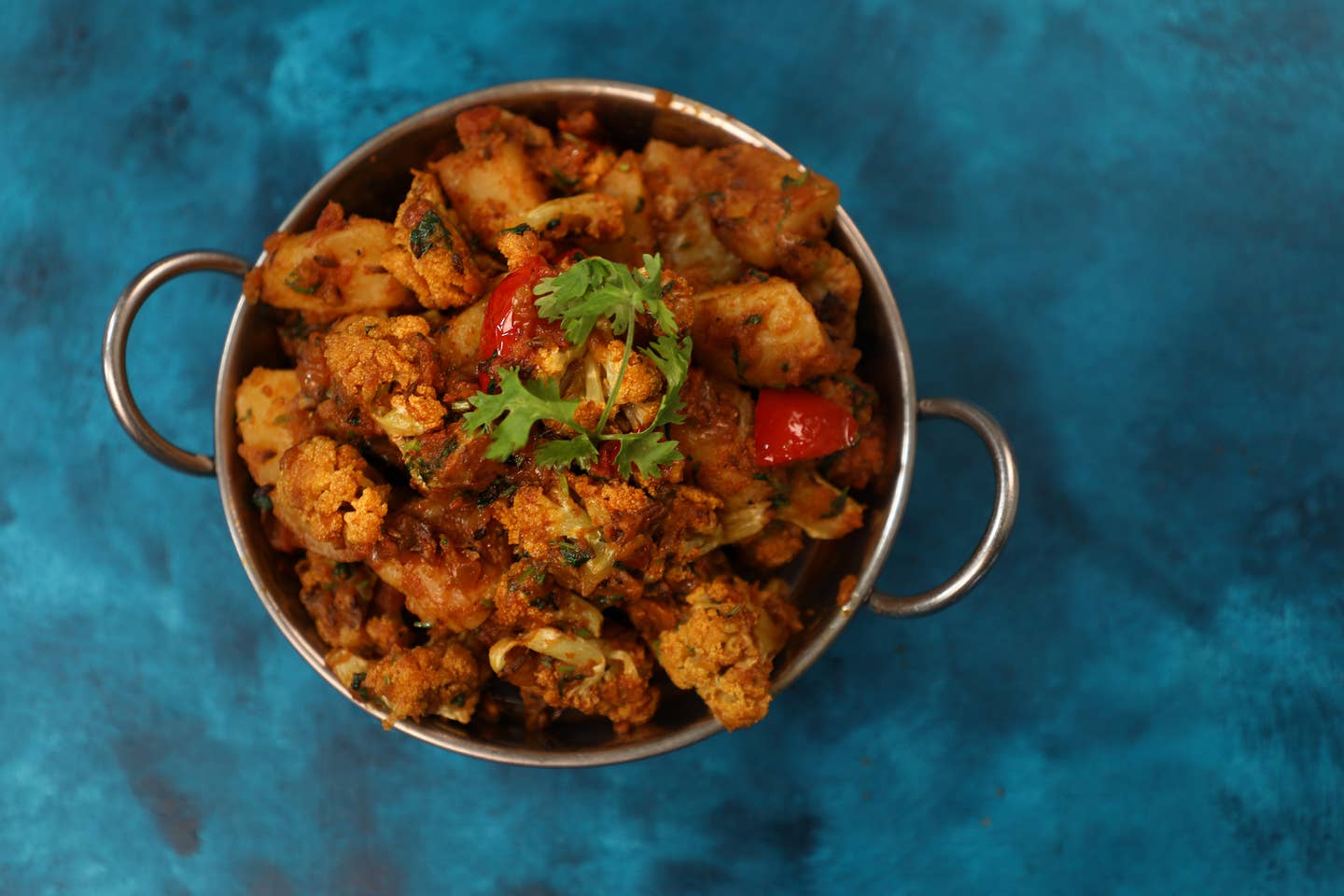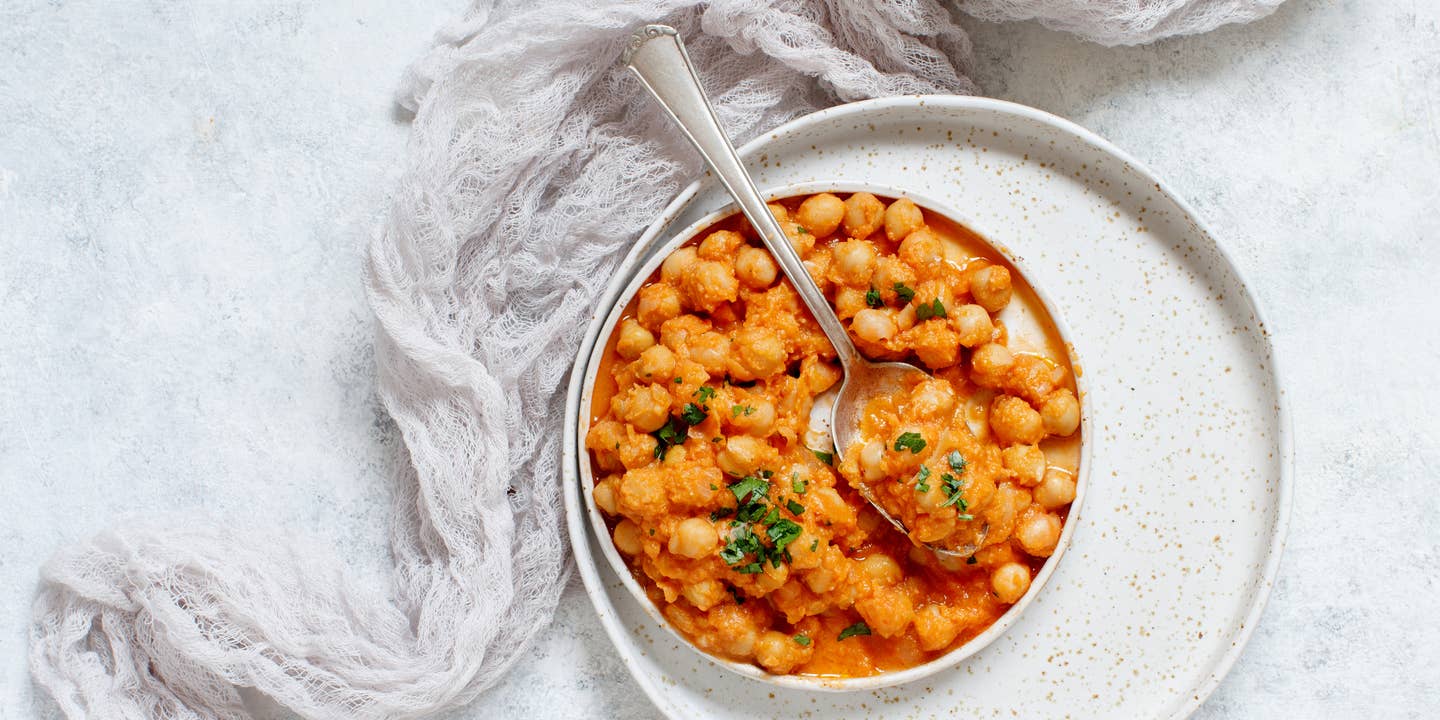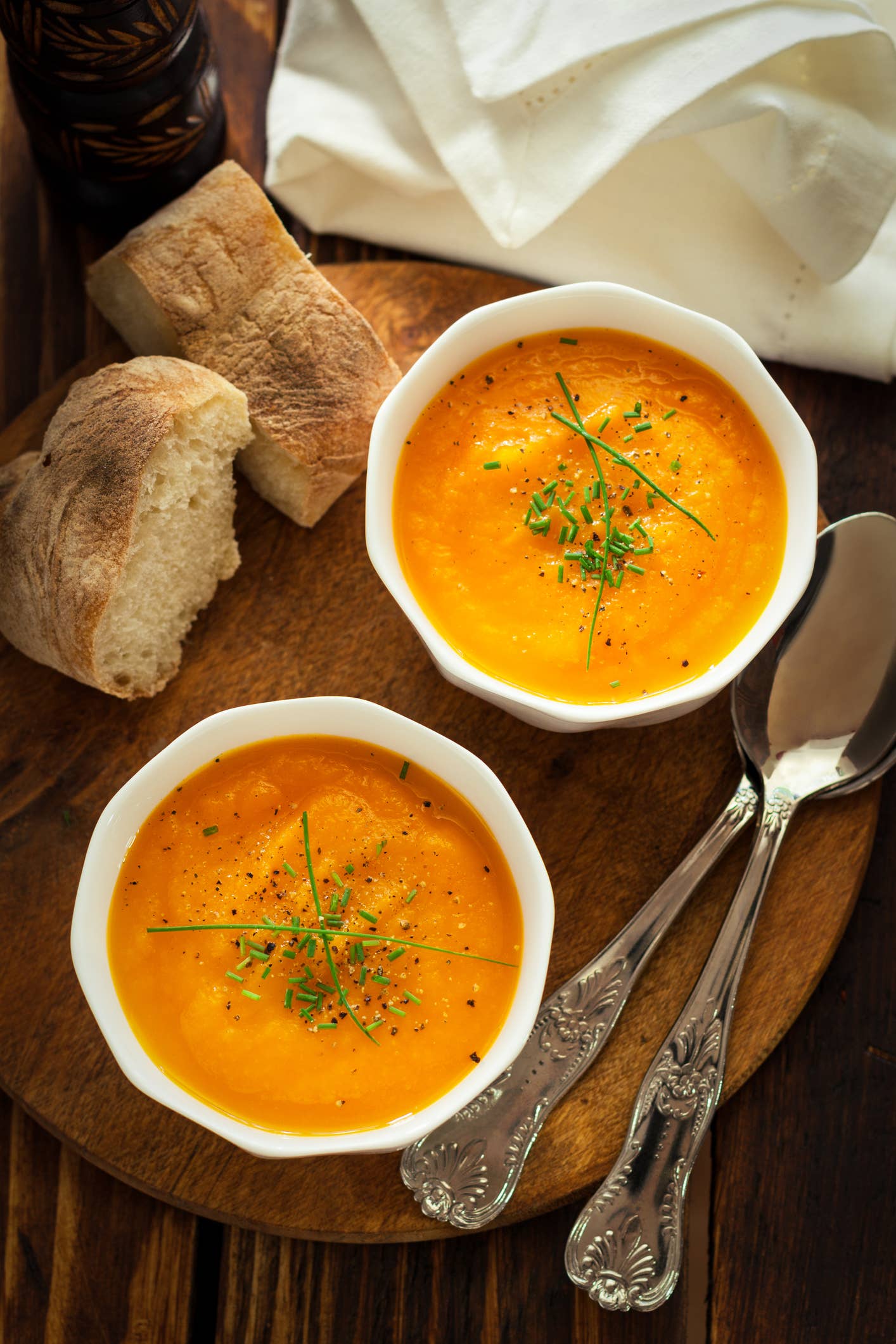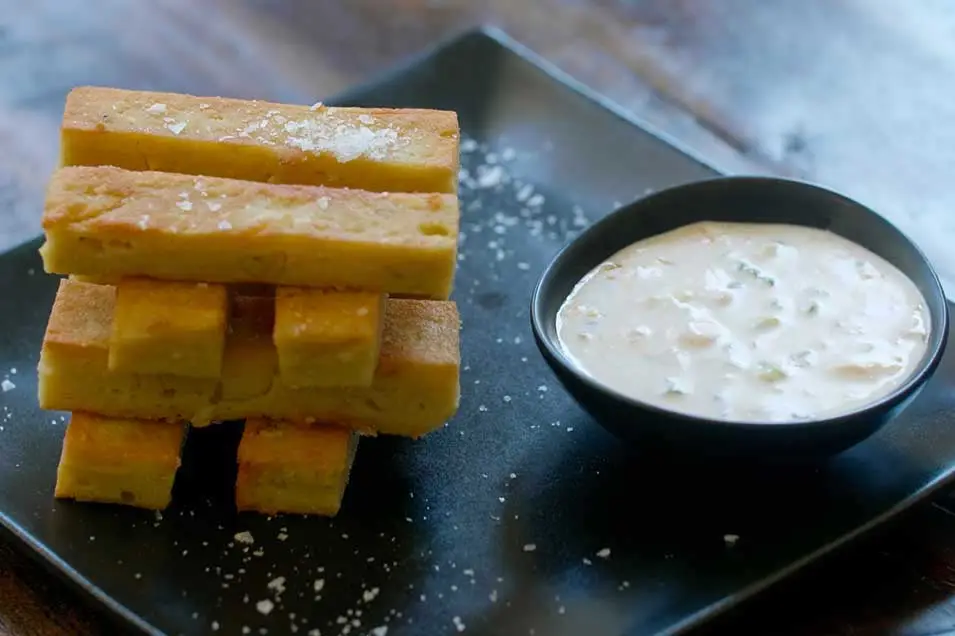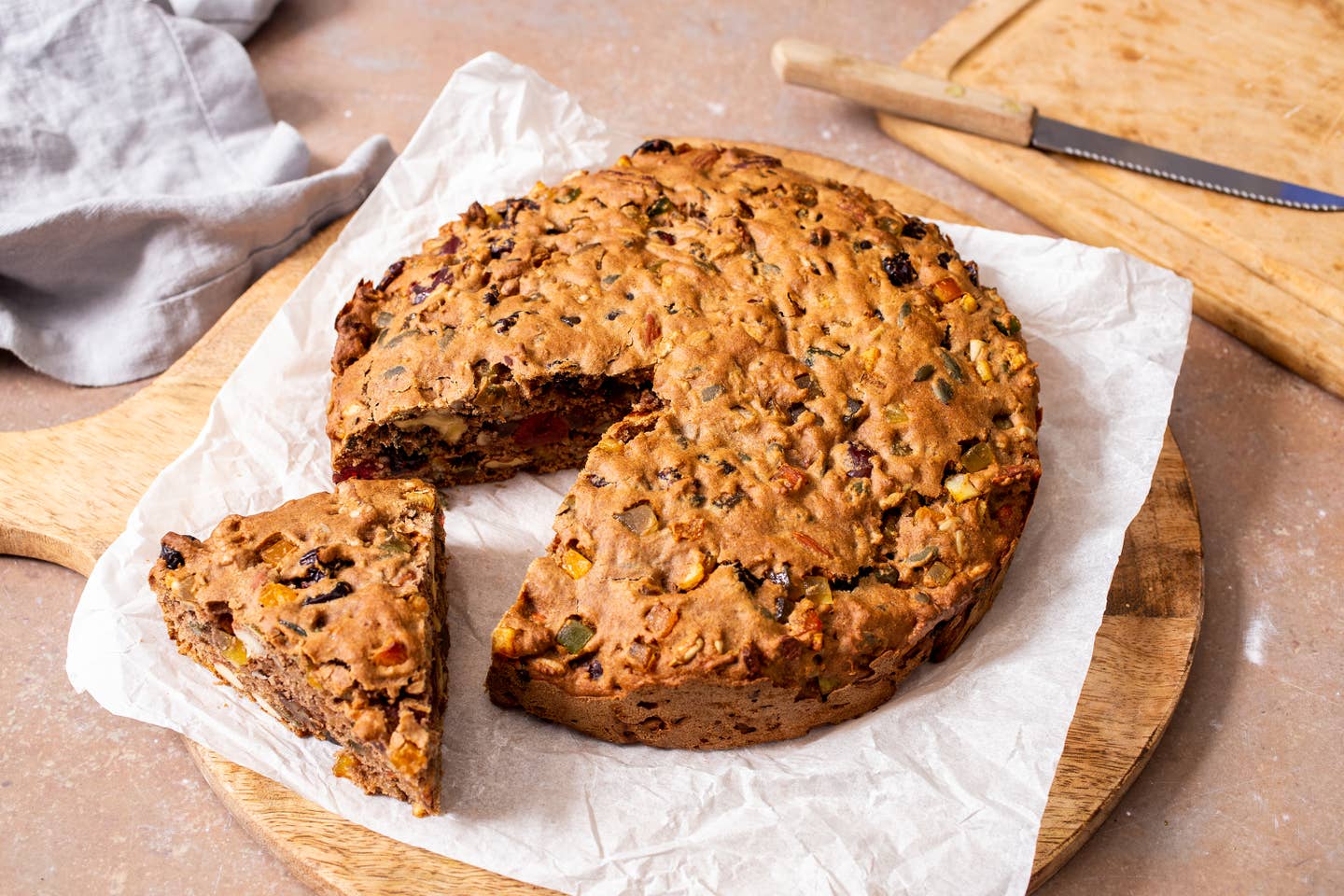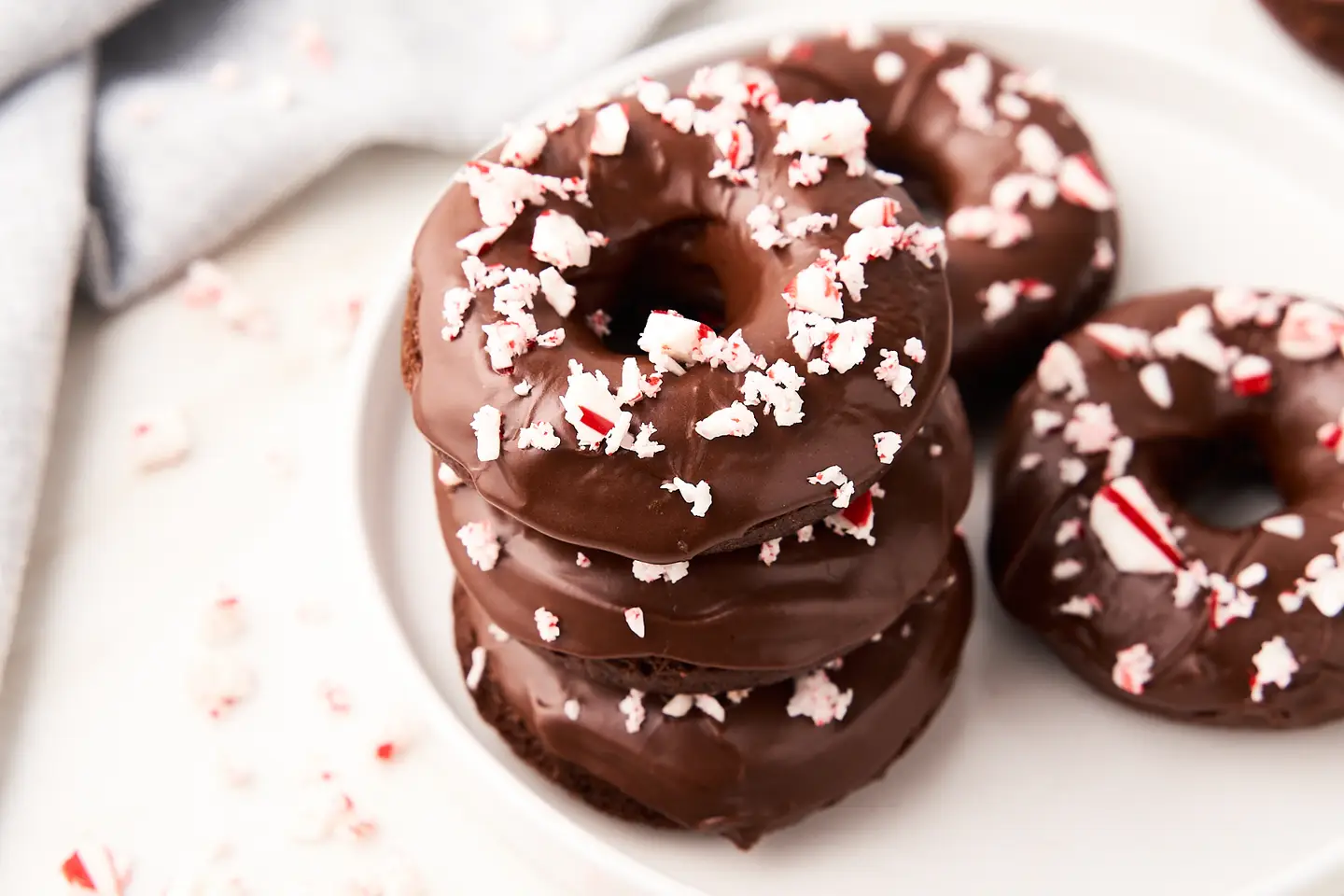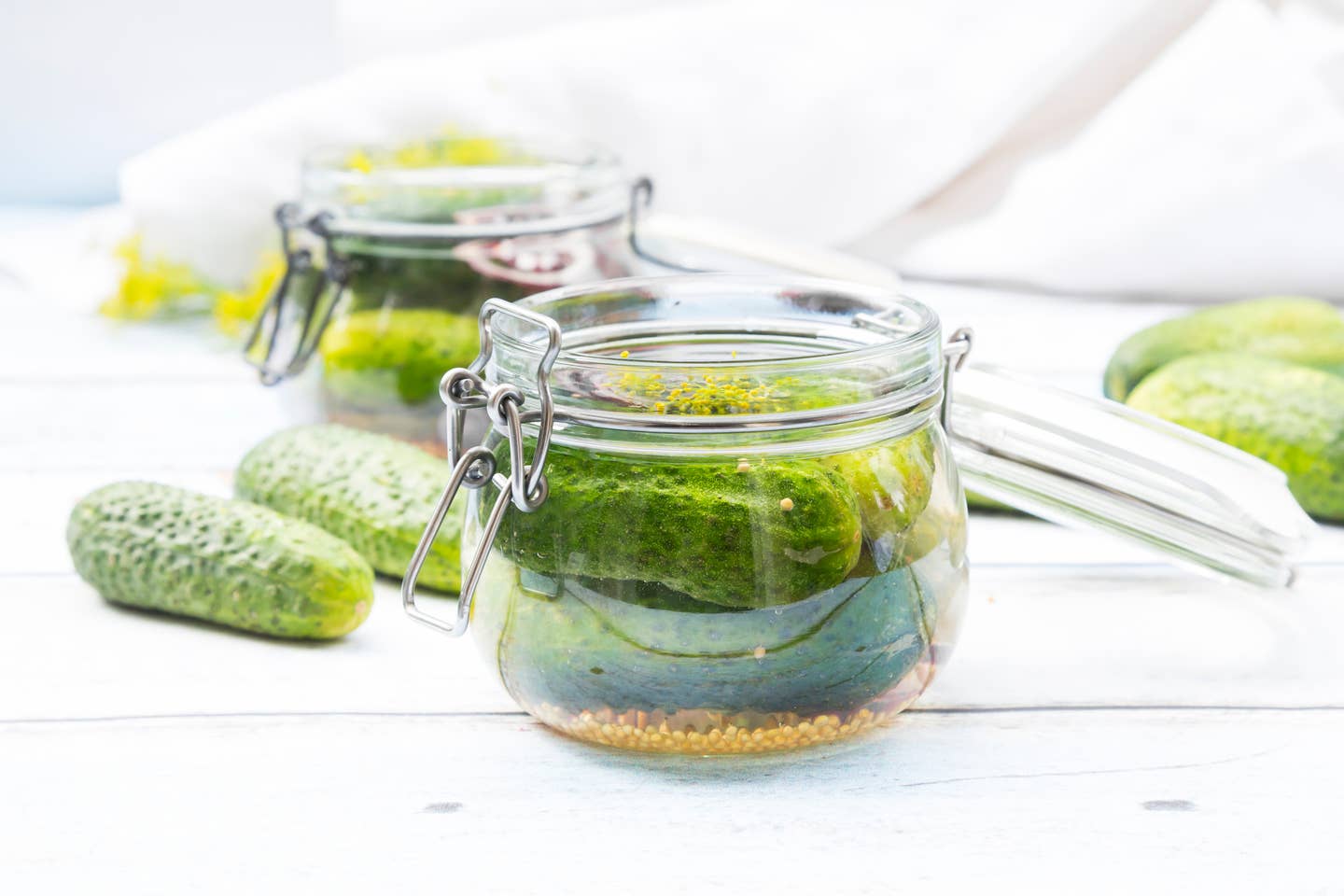
Fermenting Your Produce: How to Make Delicious, Healthy Pickles at Home
Fermented food is one of the healthiest things you can eat for your gut health and your body. This easy technique creates probiotics out of regular produce, creating healthier-for-you foods, as well as avoiding food waste and preserving your produce purchases for months. Fermenting also provides a nutritional bonus: Fermented cucumber pickles are a great source of the beneficial bacteria—those vital probiotics—that can aid in your digestion and gut health.
Putting up a batch of lacto-fermented cucumber pickles is about as simple as preserving gets. The pickles are made simply by soaking cucumbers in a salty brine, along with naturally occurring lactobacilli for fermentation and added spices and botanicals for flavoring. Lactobacilli are especially beneficial in gut health, since they break down sugars, such as lactose, and help you digest them into lactic acid, so your gut can break down foods and work to reduce your body's LDL, and lower your cholesterol, which is beneficial to long term cardiovascular health.
The bacteria ferment the carbohydrates (sugars) in the cucumbers by digesting them, causing changes in their texture and flavor. As they digest, the bacteria give off carbon dioxide and lactic acid. It’s the lactic acid that preserves the pickles by acidifying the brine and preventing the growth of other harmful bacteria.
How do the bacteria get into the mix? They just do—the many different species of beneficial lactobacilli (L. acidophilus, for example) are everywhere. They’re all over you as part of your skin’s microbiome, they’re all over the skins of the cucumbers, and they’re floating in the air. They’ll find your pickling jar on their own. Of course, so will other bacteria, but that’s where the salt comes in. Most bacteria, especially the harmful ones, are killed off by the salty brine, but the lactobacilli are hardier and survive.
Confusingly, lacto-fermented pickles are sometimes called brined pickles, because they’re fermented in salty brine. Not all brined pickles are fermented, however. Quick pickles are made using a brine of vinegar and salt, but they’re not fermented; the acidic vinegar, not lactic acid, is the preservative.
The classic fermented pickle is the kosher-style dill. The kosher part comes from the generous amount of garlic added to the brine, traditionally associated with the Jewish pickle-makers of New York’s Lower East Side.
To make these pickles, start with the freshest possible cucumbers, from your garden or from the farmers’ market (never the supermarket). A pickling variety such as Kirby is ideal, but slicing varieties also work well.
Lacto-Fermented Dill Pickles
Makes 2 quarts
Ingredients
- 2 pounds fresh cucumbers
- 6 garlic cloves
- 1 bunch dill, preferably with flower heads
- 1 tablespoon yellow mustard seeds
- 1 dried chili pepper (optional)
- 3 tablespoons pickling salt
- 4 cups water
Instructions
- Rinse the cucumbers. Slice off about a quarter inch from the blossom end. (This removes the plant hormones that can make that end mushy.) If the cukes are longer than 3 inches or so, halve them lengthwise. If they're big, end-of-season cukes, cut them again across the middle.
- Put the garlic cloves, dill, mustard seeds, and chili pepper (if using) into a 2-quart jar.
- Pack the cucumbers into the jar. Leave about 1.5 inches headspace—remove some cucumbers if necessary.
- Dissolve the salt in the water to make the brine and pour it into the jar. The brine should cover the cucumbers completely with some leftover.
- Stuff a sturdy freezer bag into the mouth of the jar. Pour the remaining brine into the bag and seal it. The bag should cover the surface and keep all the cucumbers submerged in the brine.
- Put the jar on a plate in an out-of-the-way place in the kitchen and forget about it for three days. By the third day, you should see tiny bubbles in the jar—the bacteria are getting to work. Some brine may bubble out at this point—this is normal. A thin white scum may form on the surface of the brine. This is also normal. The scum is a type of harmless yeast called kahm. Skim or blot it off, or just leave it.
- Check the pickles every few days for the next two to three weeks. They will turn olive-green; the brine will get murky. They’re ready when the bubbling has stopped. The pickles should taste sour and give you a slight prickling sensation on your tongue.
- Remove the brine bag, skim off the scum, cover the jar or divide the pickles and brine among smaller jars, and refrigerate. The pickles will keep for about 3 months.
More From The Beet
